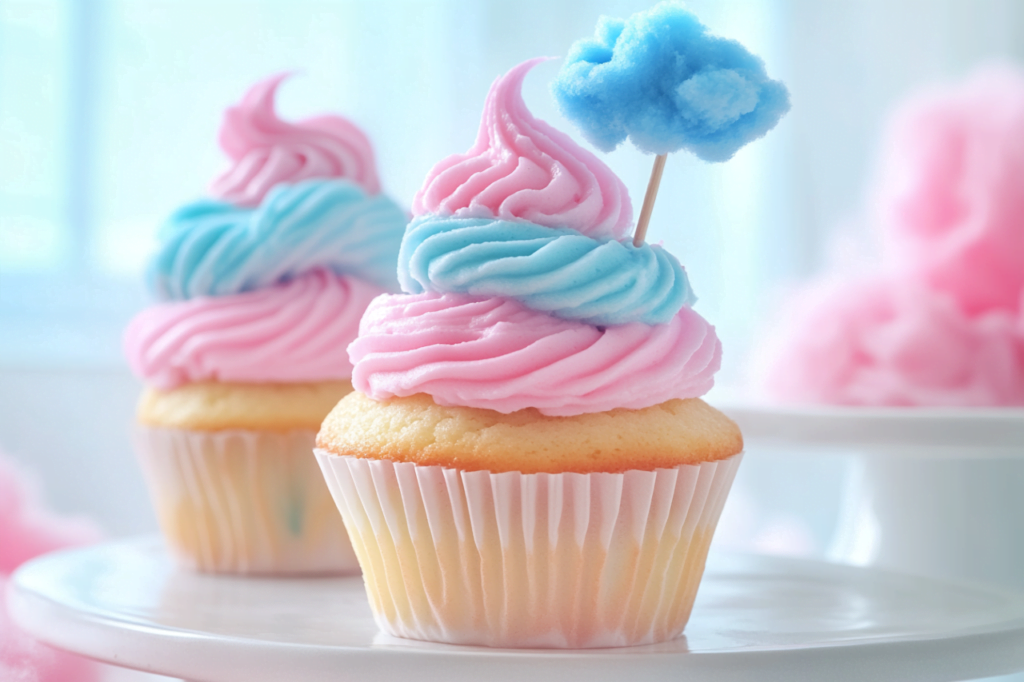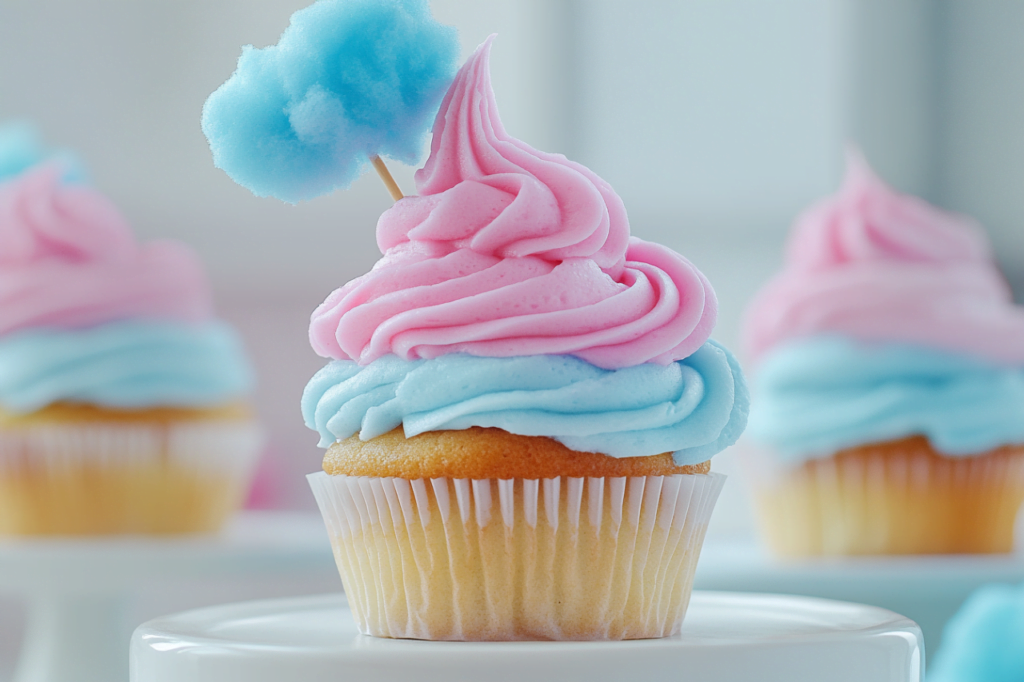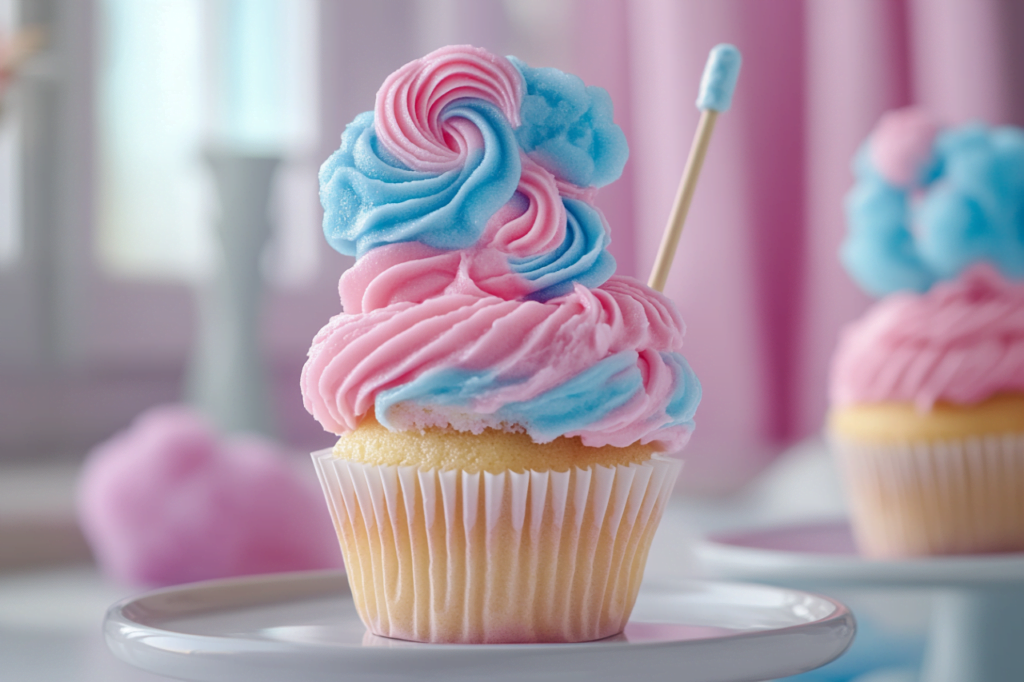The Delicate Dance: Will Cotton Candy Stay Fluffy on Frosting?
Cotton candy has an undeniable charm—it’s fluffy, colorful, and brings a whimsical touch to any dessert. But if you’ve ever wondered whether this sugary delight will stay intact when placed on frosting, you’re not alone. Many bakers and dessert enthusiasts have faced the same conundrum: Will cotton candy melt on frosting? This is more than just a question of aesthetics; it’s about maintaining that eye-catching appeal and ensuring that your dessert looks as good as it tastes.
So, why is this such a common concern? The fun, visual appeal of cotton candy makes it a popular choice for decorating cakes, cupcakes, and other sweet treats. However, understanding whether cotton candy can withstand frosting without melting is essential if you want your creation to look perfect until the very last bite. In this article, we’ll dive into the science behind the cotton candy and frosting interaction, explore practical tips to keep your decorations in place, and discover creative ways to use cotton candy in your desserts. Let’s get started!
Understanding Cotton Candy and Frosting Interaction
When it comes to decorating with cotton candy, the key to success lies in understanding how it interacts with frosting. At first glance, cotton candy and frosting might seem like a perfect match—both are sweet, colorful, and beloved by dessert enthusiasts. However, the science behind their interaction reveals a different story.
What Makes Cotton Candy So Delicate?
Cotton candy, also known as fairy floss or candy floss in different parts of the world, is made by spinning sugar at high speeds until it forms thin threads. These threads are then collected and shaped into a fluffy, airy confection. The main ingredient here is sugar, and sugar is highly hygroscopic, which means it attracts moisture from its surroundings. This characteristic is what gives cotton candy its delicate nature—it’s incredibly sensitive to any form of moisture, whether from the air or a nearby surface.
The Moisture Challenge: Why Does Cotton Candy Melt?
When placed on frosting, cotton candy is exposed to two moisture sources: the frosting itself and the ambient humidity. Most frostings, especially popular ones like buttercream and whipped cream, contain a significant amount of moisture. As cotton candy comes into contact with the frosting, it begins to absorb the moisture, causing the sugar threads to dissolve and collapse. This process is why cotton candy melts or loses its structure when placed on frosting.
Different Types of Frosting and Their Impact
The type of frosting you choose plays a significant role in how well cotton candy will hold up:
- Buttercream Frosting: Known for its creamy texture and rich flavor, buttercream is a favorite among bakers. However, its moisture content is relatively high, which can cause cotton candy to melt quickly.
- Whipped Cream: Light and airy, whipped cream has a high moisture content, making it one of the least suitable options for pairing with cotton candy.
- Fondant: Unlike buttercream and whipped cream, fondant is a drier frosting option. It creates a smoother, firmer surface that’s less likely to cause cotton candy to melt, making it a better choice for this type of decoration.
- Cream Cheese Frosting: While delicious, cream cheese frosting contains a fair amount of moisture, similar to buttercream, which can lead to melting issues.
Understanding the composition of both your cotton candy and your frosting is the first step to achieving the perfect dessert decoration. Now, let’s explore some practical tips to prevent cotton candy from melting on your creations.
Practical Tips to Prevent Melting
Now that we know why cotton candy melts on frosting, let’s look at some practical strategies to prevent this from happening. These tips will help you keep your cotton candy looking fluffy and colorful, even when it’s adorning a cake or cupcake.
1. Apply Cotton Candy at the Last Moment
One of the simplest ways to prevent cotton candy from melting on frosting is to apply it at the very last moment, just before serving. This minimizes the amount of time the cotton candy is exposed to moisture, helping it maintain its structure and appearance.
Pro Tip: If you’re decorating a cake or cupcakes for an event, wait until you’re ready to present the dessert before adding the cotton candy. This tactic works especially well for outdoor events or in conditions where controlling the environment isn’t possible.
2. Use a Moisture Barrier
A moisture barrier is a layer between the frosting and the cotton candy that prevents direct contact and reduces the chance of melting. For instance:
- Fondant Layer: Cover the frosting with a thin layer of fondant. Since fondant is much drier than buttercream or whipped cream, it provides a suitable base for the cotton candy to sit on.
- Chocolate Ganache: A layer of cooled, firm chocolate ganache can also act as a barrier, providing a dry surface for the cotton candy.
3. Choose a Drier Frosting Option
If your goal is to decorate with cotton candy, opt for a frosting that’s less likely to cause melting. As mentioned earlier, fondant is a great choice because it’s drier than other frostings.
Consider This: American buttercream, which is made with a base of butter and powdered sugar, has a lower moisture content than whipped cream or cream cheese frosting. This type of frosting, while not completely moisture-free, is still a better option when decorating with cotton candy.

4. Store Cotton Candy Properly Before Use
Proper storage of cotton candy before it’s used as a decoration is crucial. Keep the cotton candy in a cool, dry place to maintain its fluffiness and prevent it from clumping or becoming sticky.
- Thick Bags with a Solid Seal: For DIY enthusiasts planning cotton candy party favors, using thick bags with a solid seal, like Mylar bags, can help extend the shelf life and preserve the candy’s fluffiness.
- Avoid Refrigeration: While it may seem like a good idea to refrigerate your cotton candy to keep it fresh, the cold temperatures can cause moisture condensation, leading to melting. Instead, store cotton candy at room temperature in an airtight container.
By following these practical tips, you can ensure that your cotton candy decorations stay intact and look as stunning as you envisioned. Next, let’s explore the best frosting options for cotton candy decoration.
Best Frosting Options for Cotton Candy Decoration
Choosing the right frosting is crucial when decorating with cotton candy. The goal is to select a frosting that not only tastes great but also provides a stable surface for the cotton candy to sit on without melting. Let’s dive into the best frosting options and how you can use them effectively to keep your cotton candy looking fabulous.
1. American Buttercream
Why It Works: American buttercream is a popular choice among home bakers because it’s easy to make, versatile, and delicious. Made from butter, powdered sugar, and a small amount of milk or cream, American buttercream has a slightly lower moisture content compared to other types of frosting. This quality makes it a somewhat better option for pairing with cotton candy.
Recipe Tips:
- Ingredients: 1 cup of unsalted butter (softened), 4 cups of powdered sugar, 1-2 tablespoons of milk or cream, and 1 teaspoon of vanilla extract.
- Preparation: Beat the butter until creamy, gradually add powdered sugar, and continue mixing until smooth. Add the milk or cream and vanilla, then beat until light and fluffy.
Pros and Cons:
- Pros: Easy to make, holds its shape well, and can be flavored and colored as desired.
- Cons: Contains some moisture, which can still lead to melting if the cotton candy is applied too early.
2. Fondant
Why It Works: Fondant is a sugar paste that can be rolled out and used to cover cakes for a smooth, polished finish. Unlike buttercream or whipped cream, fondant is dry to the touch, which makes it a fantastic barrier between the cake and the cotton candy.
Recipe Tips:
- Ingredients: Marshmallows, powdered sugar, and a small amount of water or flavoring.
- Preparation: Melt the marshmallows with water, then gradually add powdered sugar until a dough forms. Knead until smooth and elastic.
Pros and Cons:
- Pros: Creates a dry, stable surface; less likely to cause cotton candy to melt.
- Cons: Requires more effort to prepare and apply; some people may find the texture less appealing than other frostings.
3. Swiss Meringue Buttercream
Why It Works: Swiss meringue buttercream is lighter and silkier than American buttercream and is made with egg whites, sugar, and butter. While it’s a bit more technical to make, it offers a lower moisture content compared to other frostings, which can help in reducing cotton candy melting.
Recipe Tips:
- Ingredients: 4 large egg whites, 1 cup granulated sugar, 1 1/2 cups unsalted butter (softened), and 1 teaspoon vanilla extract.
- Preparation: Whisk egg whites and sugar over simmering water until the sugar dissolves, then beat until stiff peaks form. Gradually add butter and vanilla, continuing to beat until smooth and creamy.
Pros and Cons:
- Pros: Smooth, light texture; holds up better in different temperatures.
- Cons: More challenging to make and may require a stand mixer for best results.
By choosing one of these frostings, you can enhance your chances of maintaining the beautiful, fluffy appearance of cotton candy on your desserts. But why stop at just frosting? Let’s look at some creative ways to use cotton candy beyond the traditional cake and cupcake decorations.

Creative Ways to Use Cotton Candy in Desserts
Cotton candy is more versatile than you might think! Beyond just sitting on top of a cake or cupcake, there are plenty of creative ways to incorporate this sweet treat into your desserts. Let’s explore a few ideas that can bring a unique twist to your baking.
1. Cotton Candy as a Filling
Why not take the fun of cotton candy inside your desserts? You can use cotton candy as a filling for cakes or cupcakes to add a burst of sweetness and surprise.
- How to Use It: Simply create a small cavity in your cake or cupcake, fill it with a small amount of cotton candy, and then seal it with a bit of frosting or cake crumbs. The cotton candy will dissolve slightly, infusing a sugary flavor throughout.
Best For: Kids’ birthday parties or themed events where a fun, unexpected twist is appreciated.
2. Cotton Candy Toppers and Decorations
Cotton candy makes for fantastic toppers beyond cakes and cupcakes. Try using it as a decorative element on other desserts like:
- Ice Cream Sundaes: Add a small tuft of cotton candy on top of your favorite sundae for a sweet and fluffy contrast.
- Milkshakes: Use cotton candy as a colorful garnish for milkshakes, adding a bit of whimsy to your presentation.
3. Cotton Candy Infused Frosting
For a unique flavor twist, consider dissolving cotton candy into cream or milk and then incorporating that liquid into your frosting. This method creates a subtly sweet and colorful frosting that has the essence of cotton candy.
- How to Make It: Melt a handful of cotton candy into a small amount of cream, and then whip this infused cream into your buttercream frosting. Adjust the sugar content accordingly since cotton candy is quite sweet.
4. Themed Cakes and Cupcakes
Cotton candy works wonderfully for themed cakes and cupcakes. For example:
- Carnival or Fair-Themed Parties: Cotton candy is an excellent addition to carnival-themed desserts. Create a tiered cake that looks like a cotton candy stand, with different colors and flavors represented.
- Unicorn or Fantasy Themes: The pastel hues and fluffy texture of cotton candy fit perfectly with fantasy-themed parties. Use various colors of cotton candy to create a dreamy, magical effect.
By thinking outside the box, you can use cotton candy in a variety of creative ways to make your desserts stand out. Now that we’ve covered these innovative ideas, let’s move on to a step-by-step guide to decorating with cotton candy.
Step-by-Step Guide: Decorating with Cotton Candy
Decorating cakes and cupcakes with cotton candy can add a whimsical touch to any dessert. However, to achieve that perfect look, there are a few techniques to keep in mind. Here’s a step-by-step guide to help you master the art of decorating with cotton candy.
Step 1: Prepare Your Frosting Base
Before adding cotton candy, ensure your cake or cupcakes are properly frosted. Choose a frosting that is dry and stable, such as fondant or American buttercream, to minimize the risk of melting. The frosting should be smooth and firm to provide a good base for the cotton candy.
- Tip: If you’re using a moister frosting like buttercream, consider applying a thin layer of fondant over it to act as a moisture barrier. This layer will help protect the cotton candy from direct contact with moisture.
Step 2: Shape the Cotton Candy
Cotton candy can be shaped and styled to match the theme of your dessert. You can create small tufts, large fluffy clouds, or even specific shapes by gently molding the cotton candy with your hands.
- Pro Tip: If you want to create specific shapes or designs, consider using cookie cutters as molds. Place the cotton candy inside the cutter and gently press it down to form the desired shape.
Step 3: Apply Cotton Candy Just Before Serving
Timing is crucial when working with cotton candy. To prevent it from melting or losing its shape, add the cotton candy decorations just before serving the dessert.
- How to Apply: Gently place the shaped cotton candy on top of the frosting. Avoid pressing too hard, as this could compress the cotton candy and reduce its fluffiness.
Step 4: Enhance with Additional Decorations
To make your dessert even more eye-catching, consider adding additional decorations such as edible glitter, sprinkles, or small candies. These can be sprinkled around the cotton candy to enhance its appearance and add a bit of sparkle.
- Ideas for Extra Flair: For a carnival-themed cake, add small paper flags or a miniature Ferris wheel decoration. For a unicorn-themed dessert, consider adding colorful fondant stars or edible pearls.
Step 5: Maintain Fluffiness and Color
Once the cotton candy is in place, it’s important to keep it away from moisture and heat. Store the decorated dessert in a cool, dry place until it’s ready to be served. Avoid refrigeration, as this can cause condensation and lead to melting.
- Storage Tip: If you need to store the dessert for a short time before serving, consider using a cake box or cover that is not airtight to avoid trapping moisture.
By following these steps, you can create beautiful, whimsical desserts that feature cotton candy as the star decoration. Now, let’s look at some common mistakes people make when decorating with cotton candy and how to avoid them.
Common Mistakes and How to Avoid Them
Even experienced bakers can run into trouble when using cotton candy as a decoration. Here are some common mistakes to watch out for and tips on how to avoid them.
Mistake 1: Applying Cotton Candy Too Early
One of the most frequent mistakes is applying cotton candy too early before serving. This can cause the cotton candy to absorb moisture from the frosting and air, leading to melting and a less-than-fluffy appearance.
- Solution: Always add cotton candy just before serving the dessert. This minimizes its exposure to moisture and helps it retain its shape and texture.
Mistake 2: Using Moist Frostings Without a Barrier
Using a moist frosting like whipped cream or buttercream without a moisture barrier can cause the cotton candy to melt almost immediately.
- Solution: Opt for a drier frosting like fondant or add a thin layer of fondant over your chosen frosting. This provides a protective barrier and reduces the chance of melting.
Mistake 3: Not Considering Environmental Factors
Environmental factors such as humidity and temperature play a significant role in whether cotton candy will melt. High humidity or a warm room can accelerate the melting process.
- Solution: Decorate your desserts in a cool, dry environment. If you’re in a humid area, consider using a dehumidifier in your kitchen to help control the moisture levels.
Mistake 4: Overhandling Cotton Candy
Overhandling cotton candy can cause it to compress, lose its shape, and become sticky.
- Solution: Handle cotton candy as little as possible and use light, gentle touches when shaping or applying it to the dessert.
Mistake 5: Storing Decorated Desserts in the Fridge
Storing desserts decorated with cotton candy in the fridge can lead to condensation forming on the surface, which will cause the cotton candy to melt.
- Solution: Store the decorated desserts in a cool, dry place at room temperature. If you must refrigerate the cake, wait to add the cotton candy decorations until after the cake has come back to room temperature.
By avoiding these common mistakes and using the right techniques, you can create stunning desserts with cotton candy that will wow your guests.
Conclusion
To sum up, using cotton candy as a decoration on frosting can be a delightful and visually appealing choice, but it requires some care and consideration. By understanding the interactions between cotton candy and different types of frosting, selecting the right frosting options, and following practical tips to prevent melting, you can successfully use cotton candy to decorate your desserts. Remember, timing is everything, and with a little creativity and attention to detail, you can create show-stopping desserts that will impress everyone.
So, don’t be afraid to experiment with cotton candy on your next cake or cupcake project. Have fun with the process, and enjoy the magical transformation that this fluffy confection can bring to your baking. And as always, feel free to share your experiences and tips in the comments below!
We’d love to hear from you!
Have you tried using cotton candy on frosting? What tricks and tips worked for you? Share your thoughts in the comments section and join our community of dessert enthusiasts. Don’t forget to subscribe to Valentina Recipes for more delightful dessert ideas and inspiration. And if you enjoyed this article, share it with your friends on social media and spread the love for creative baking!
Print
Will Cotton Candy Melt on Frosting? Discover the Secret
- Total Time: 10 minutes
Description
🎉 Uncover a fun and creative way to combine cotton candy with frosting, adding a touch of whimsy to your desserts! 🍰
🍭 Perfect for parties or treats, this recipe will surprise and delight everyone with its unique twist! 🎊
Ingredients
– 1 cup of unsalted butter (softened)
– 4 cups of powdered sugar
– 1-2 tablespoons of milk or cream
– 1 teaspoon of vanilla extract
– Marshmallows
– Powdered sugar
– A small amount of water or flavoring
– 4 large egg whites
– 1 cup granulated sugar
– 1 1/2 cups unsalted butter (softened)
Instructions
1. Choose the type of frosting for your dessert, considering drier options like fondant or American buttercream to prevent cotton candy from melting.
2. Prepare your frosting base by applying a smooth and firm layer on your cake or cupcakes. Use fondant as a moisture barrier, if necessary, to protect the cotton candy.
3. Shape the cotton candy according to the theme. You can gently mold it into tufts, clouds, or specific shapes using your hands or cookie cutters.
4. Apply the cotton candy just before serving to ensure it remains fluffy and intact. Gently place it on top of the frosting, avoiding unnecessary pressure.
5. Enhance your dessert with additional decorations like edible glitter, sprinkles, or other complementary decorations to add charm and extra flair.
6. Store the decorated dessert in a cool, dry place away from moisture and heat to maintain the integrity of the cotton candy decorations.
7. Avoid overhandling the cotton candy while decorating to prevent it from compressing or losing its fluffy appeal.
8. Refrain from refrigerating the decorated dessert, as condensation can cause the cotton candy to melt. Add cotton candy after the dessert has been brought to room temperature if it was stored in the fridge.
9. Experiment with creative ways to use cotton candy, such as using it as a filling for cakes or cupcakes, as expressive toppers for sundaes or milkshakes, or even infused into frosting for unique flavor combinations.
Notes
1. Apply cotton candy to your desserts at the very last moment to keep it from melting due to moisture.
2. Use a moisture barrier like a fondant layer or firm chocolate ganache between the frosting and cotton candy to prevent direct contact.
3. Choose a drier frosting option like fondant or American buttercream to maintain the fluffy texture of cotton candy.
- Prep Time: 10
- Category: Dessert
- Method: No Bake
- Cuisine: American


